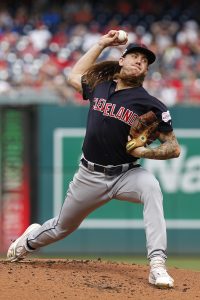Over the coming days, I am discussing some of the higher profile upcoming arbitration cases. I rely partly on my arbitration model developed exclusively for MLB Trade Rumors, but will also break out some interesting comparables and determine where the model might be wrong. 2020 projections are available right here.
The Cubs’ Kris Bryant reaches his third year of arbitration coming off a solid campaign in which he hit .281 with 31 home runs and knocked in 77 runs in 634 plate appearances. This comes at the heels of an injury-laden 2018 campaign in which the third baseman/outfielder only played 102 games and hit just 13 home runs. Bryant had received a record deal in 2018 for $10.85MM, after compiling both a Rookie of the Year Award and Most Valuable Player honors prior to reaching arbitration. However, Bryant’s disappointing 2018 only earned him a small $2.05MM raise. The model projects him to get a far more generous $5.9MM raise in 2020 after a healthy season with solid power.
Starting at an obviously very high $12.9MM salary in his second year of arbitration eligibility, it is possible that Bryant’s raise could be affected just by the base salary on which his raise will be added. So it would be useful to look for comparable players with high salary levels.
The other particularly notable distinction in Bryant’s number is that 77 RBI is a fairly small total for a hitter with 31 homers. A good comp would be a player who hit for similar power, without knocking in many runs either.
Fellow third baseman Josh Donaldson emerges as a possibility with his $6MM in 2018. He hit .270/33/78, obviously quite similar to Bryant’s .282/31/77. However, Donaldson only had 496 plate appearances. Additionally, Donaldson was actually in his fourth year of arbitration eligibility (Bryant is in his third year). Furthermore, Donaldson was somewhat of a unique case coming off a two-year deal. However, $6MM seems at least plausible for Bryant.
Another third baseman to consider as a ceiling is Nolan Arenado last year. Arenado got an $8.25MM raise off a very high base salary of $17.75MM, after putting up a .297/38/110 line in 673 plate appearances. Despite the hitter’s park augmenting those numbers, Arenado’s case appeared to be stronger than Bryant’s, and $8.25MM is likely a ceiling for Bryant’s potential raise.
Didi Gregorius might be a potential floor. Back in 2018, the shortstop received a $3.15MM raise after hitting .287 with 25 home runs and 87 runs batted in. Gregorius played a harder position and actually topped Bryant on both batting average and runs batted in, but Bryant’s extra six home runs suggest Gregorius is probably a floor.
Another floor could be Manny Machado two years ago, as he hit .259 with 33 homers and 95 runs RBI, and got a $4.5MM increase.
Overall, I think the model gets Bryant’s raise about right. He should safely land between Machado’s $4.5MM raise and Arenado’s $8.25MM upgrade, and probably closer to Machado. Donaldson’s $6MM raise, his contractual differences notwithstanding, probably is a reasonable guess as to Bryant’s salary and is only $400K larger than the model projects.


